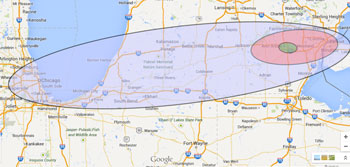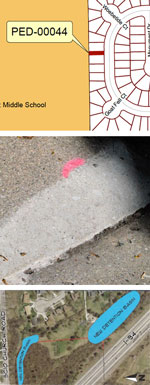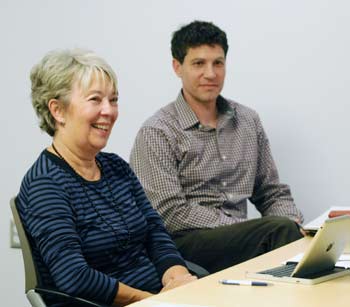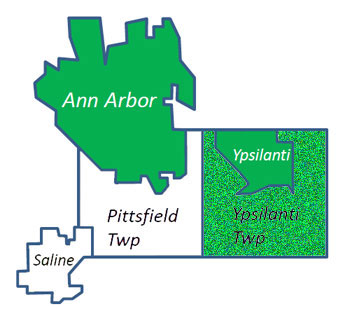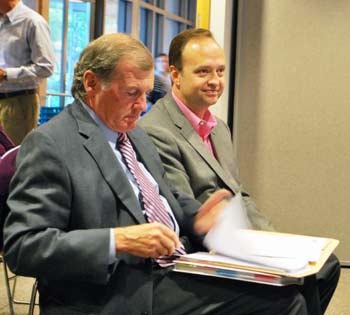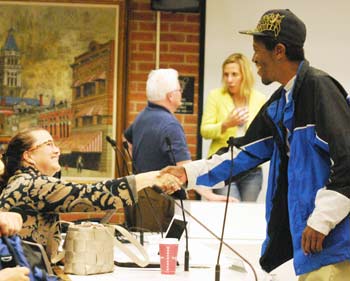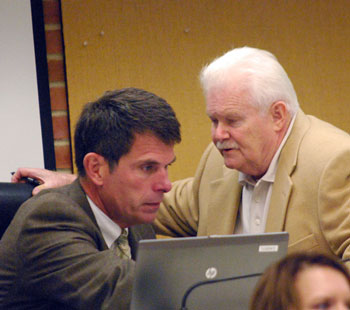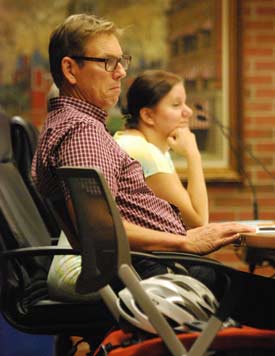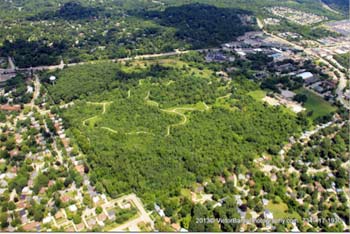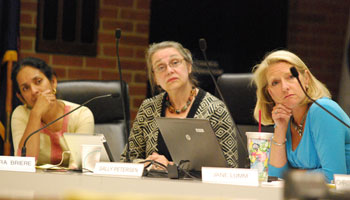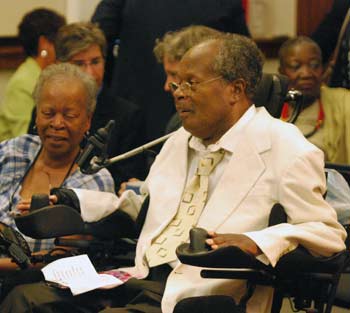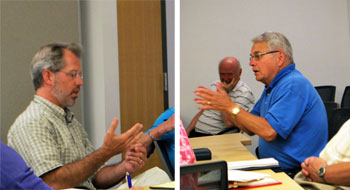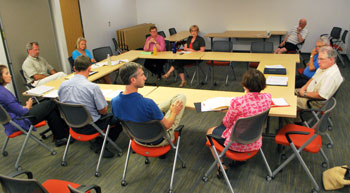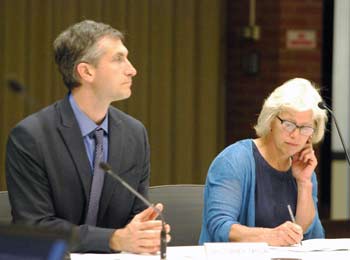AAATA Formalizes Ypsi City Relationship
Ann Arbor Area Transportation Authority board meeting (Oct. 17, 2013): The main business of the board’s meeting was the approval of a funding agreement with the city of Ypsilanti – a new member of the AAATA, and the first jurisdiction to join the authority outside of the city of Ann Arbor.

Former Y lot from the northwest corner of William and Fifth Avenue in downtown Ann Arbor, looking northwest. In the background, the new Blake Transit Center is under construction. The AAATA voted to establish a committee to meet with whatever developer makes a successful purchase offer on the lot. Also announced is that the old BTC building, located on the opposite side of the block, will be demolished in early November, somewhat ahead of the original timing. (Photos by the writer.)
The funding agreement between the AAATA and the city of Ypsilanti formalizes the existing arrangement under which Ypsilanti passes its dedicated transit millage through to the AAATA. The board approved it unanimously. The Ypsilanti city council will consider the agreement on Nov. 5.
In another piece of business that came at the end of the meeting, after a closed session that lasted about an hour and a half, the board voted to establish a subcommittee to meet with whichever developer might make the winning bid on the city-owned property at Fifth and William – known as the old Y lot. That’s an alternative to the AAATA attempting to bid on the property itself, which was listed at $4.2 million. Bids were due by Oct. 18. The city paid $3.5 million for the property 10 years ago and still owes that much on a balloon payment due at the end of this year.
An item that simply authorized the purchase of additional vehicles for the AAATA’s vanpool program had some complex history behind it – involving the federal government shutdown. The shutdown prevented the AAATA from completing its pursuit of a waiver from the Federal Transit Administration for the Buy America requirement. And the Buy America requirements were pointing the AAATA toward purchasing more expensive vehicles (Chevrolet Traverses) that did not fit the needs of passengers as well as the non-qualifying vans (Dodge Caravans). So the board opted to use local millage revenue, and to backfill the operational expenses that the millage money was covering – by using federal preventive maintenance dollars.
In a final routine item, the board authorized the AAATA’s chief executive officer to execute contracts with MDOT that are less than $1 million.
A common thread among public commentary and other board communications was the 5-year service improvement plan the AAATA has developed, and the schedule of public meetings to introduce that plan.
Editor’s note: For the AAATA’s Oct. 17 meeting, The Chronicle hired a CART (Communications Across Real Time) professional to provide a real-time “text” stream of the meeting that was accessible online through The Chronicle. The resulting transcript from that live text stream is available here: [link]. The Chronicle is experimenting with ways to make public meetings more accessible to a broader segment of the community, and to provide archival transcripts of those meetings. [Full Story]




